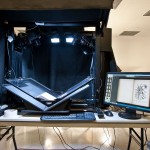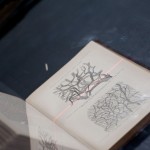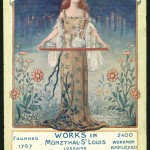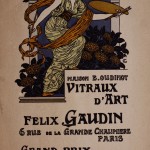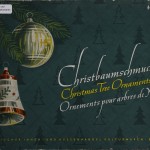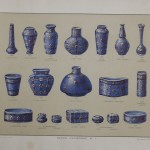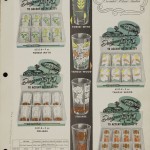Non è dubio alcuno, che il vetro è vno de i very frutti dell’Arte del fuoco.
“Without a doubt, glass is a true fruit of the art of fire,” says the opening letter to Antionio Neri’s L’Arte Vetraria (The Art of Glass).
Antonio Neri’s work has a singular importance in glass literature. Neri was a Florentine priest who worked as a glassmaker under the patronage of Don Antonio de’ Medici. Perhaps due to its disclosure of secret Venetian techniques, L’Arte Vetraria was the most popular glassmaking manual for 200 years following its original publication in 1612.
The Rakow Research Library’s collection includes an English translation of L’Arte Vetaraia, printed in 1662, that was originally owned by King Charles II. A rare treasure, this book is among the many digital books now available to view online as a result of the Library’s digitization efforts.
The Rakow Library’s collection is the most comprehensive in the world on the subject of glass and glassmaking. Open to the public, the Library is a valuable resource to researchers, students, and glass enthusiasts around the world. Many of these resources are now available free for people to read, search, and download at cmog.org.
Among the first materials digitized were volumes from the rare book collection. To date, more than 250 rare books have been digitized and are available online, including the Mappae Clavicula, the oldest manuscript in the Library’s collection dating to 1150.
When selecting materials to be digitized, many criteria are considered. One of the most significant is accessibility. “We want to be able to disseminate the materials we are digitizing to the public,” says Lori Fuller, associate librarian, collections management. “The materials must be in the public domain or we need to be able to acquire permission to digitize the material and publish it online.”
Other criteria for digitization include whether the material is in high demand, of historical or cultural importance, is exceptionally unique or rare, or will be part of an upcoming Museum exhibition or publication.
- Specialized equipment is brought onsite to scan rare books into high-resolution digital files.
- Specialized equipment is brought onsite to scan rare books into high-resolution digital files.
Most digitization is done onsite at the Rakow Library using specialized equipment. Books are scanned page by page into high-resolution images by Boston Photo Imaging. Individual page images are then compiled into a PDF document that is linked to the item’s record in the online collections browser.
The full text of the digital material is searchable through use of optical character recognition (OCR), allowing researchers to search within the text of the PDF and also find the material through a Google or web search. Users can also download the PDFs to their own computers or tablets.
“Scanning the materials is the easiest part of digitization,” says Fuller. The most challenging and labor intensive part of the process is creating metadata. “Metadata is the descriptive cataloging of these materials—author and publisher information, subjects, notes about the items, including a description of what they are. Without metadata, there is limited discovery of the material; it is the most important part of digitization.”
One of the most popular digital collections in the Library is the extensive collection of glass company trade catalogs. More than 200 trade catalogs have been digitized and are online to view.
- Trade card from Cristalleries de Saint Louis, Munzthal St. Luis, Alsace-Lorraine, France, 1924
- Album de lampes électriques, plafonniers et tulipes en émaux translucides vitrifiés. Paris, 1920-1940. Bib ID 75926.
- Vitraux d’art. Felix Gaudin, Paris, 1905-1910. Bib ID 55627.
- Christbaumschmuck = Christmas tree ornaments = Ornements pour arbres de Noël. Deutscher Innen und Aussenhandel Kulturwaren, Berlin, Germany, 1952. Bib ID 90961.
- Catalogue de vases, cache-pots, jardinières, coupes a fleurs, bonbonnières, coffrets, lampes électriques, vasques, plafonniers & tulipes en émaux translucides vitrifiés. Paris, 1923. Bib ID 75925.
- Pressed & blown glassware : catalogue G-12. Dominion Glass Company, Montreal, Quebec, Canada. 1954-1959. Bib ID 94119.
Creating digital copies of materials not only increases access but also helps preserve fragile materials. Materials that are “at risk” due to their condition or in formats that are becoming obsolete are also given priority. Creating a digital copy ensures that the content is not lost as technology moves forward. The Library has reformatted a number of materials at risk because of their age, including a variety of films and videos such as U-matic, VHS, Super 8, 16mm, 35mm, and Beta Cam. Approximately 1,550 films have been digitized.
Highlights of the digital collection include: the Steinberg Foundation collection of 20th-century Czech glass design drawings; original sketches by Leopold and Rudolf Blaschka for their glass models of botanical specimens and invertebrate animals; photographs by artists Robert Florian and Marvin Lipofsky of American studio glass masters at work; the notebooks, diaries, and letters of Steuben designer Frederick Carder; images of works selected for publication in New Glass Review from Volume 3 to the latest issue; the catalogs from the major exhibitions Glass 1959: A Special Exhibition of International Contemporary Glass (1959) and New Glass: A Worldwide Survey (1979); and more than 100 publications accessible in full-text format from the Museum’s scientific research department.
The Rakow Library continues to add material online as it is digitized. Check back regularly to see what’s new at cmog.org/library.


